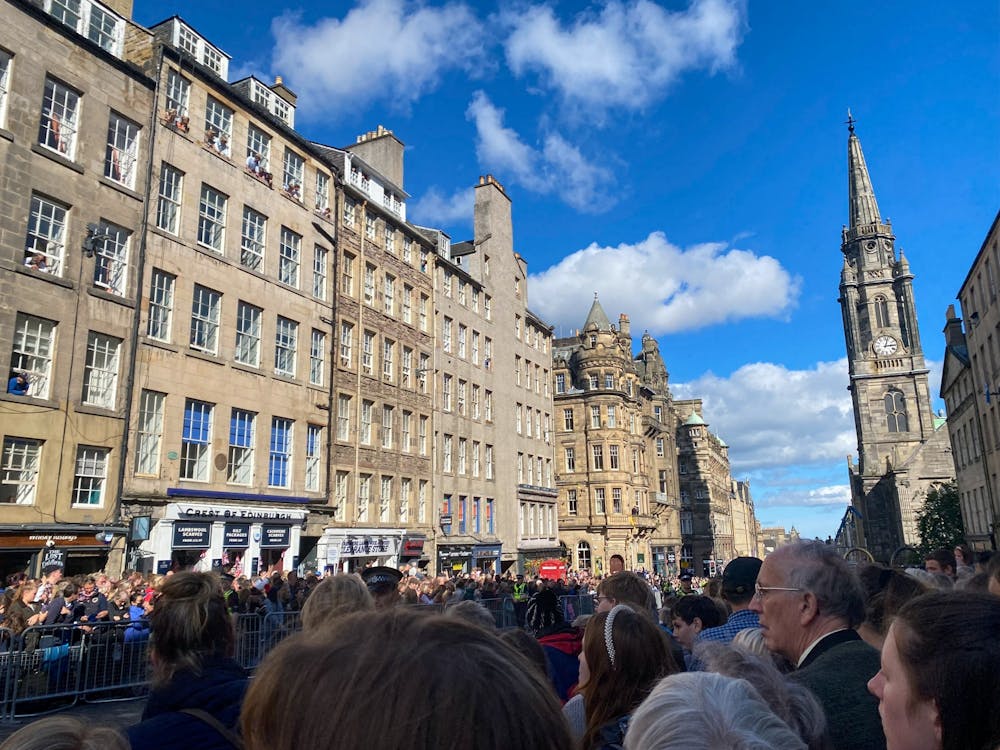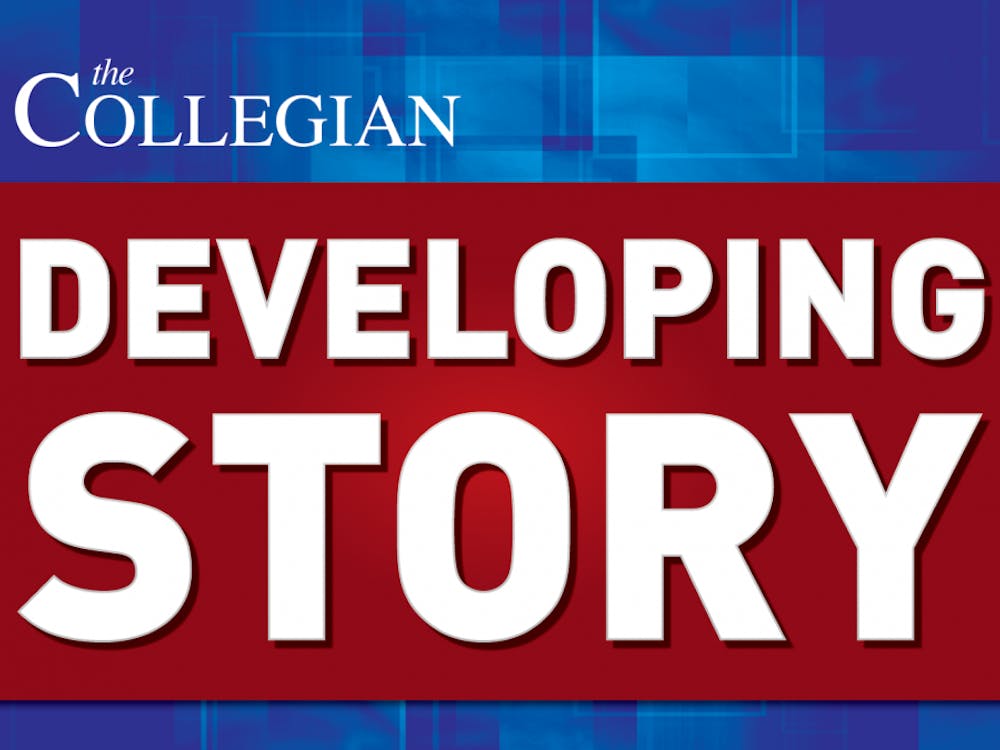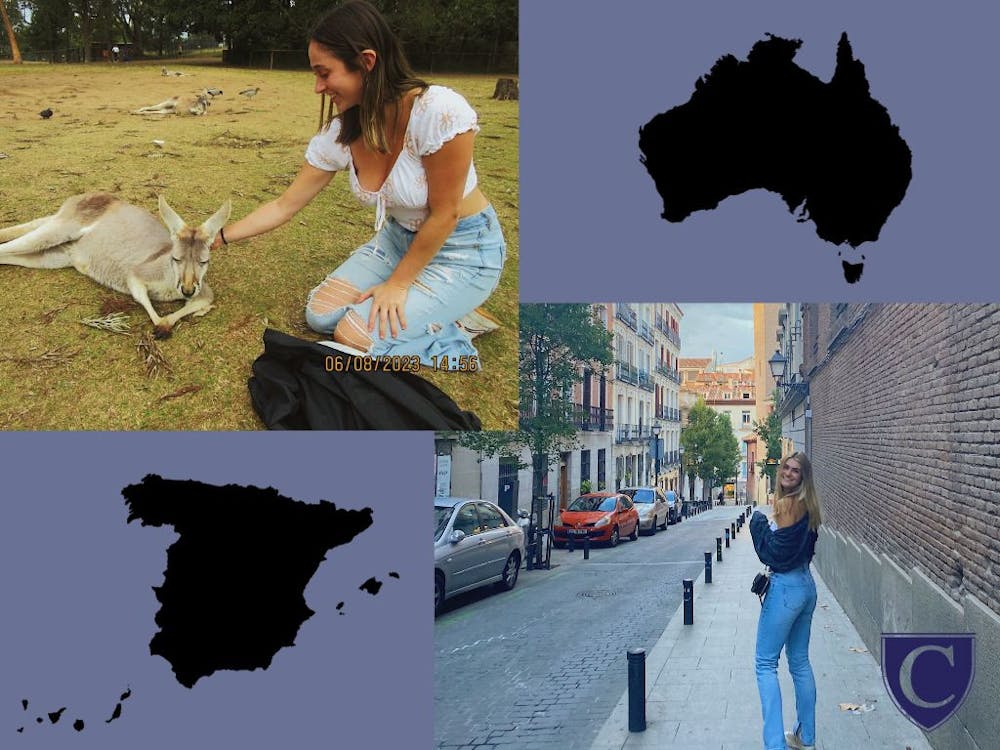Editor's Note: The views and opinions expressed in this article do not reflect those of The Collegian.
Studying abroad for a semester often comes with feelings of uncertainty and excitement. As my flight to Edinburgh, Scotland, got closer, I made a list of all the right documentation and objects I would need for such an exciting journey. After my first 10 days in Scotland, I realized that the weeks of planning could not have prepared me for the completely different cultural context I would encounter — especially when faced with the sudden passing of Queen Elizabeth II.
It was Sept. 8 when my friend, another student at the University of Richmond, and I heard the news. We were in France at that time, talking about what we could expect from our flight to Edinburgh the day after. My friend decided to watch the BBC’s live stream on the queen’s health conditions while we were visiting Versailles that afternoon.
At the time, I didn’t truly believe that the queen could have been in such worrisome conditions; however, the BBC gave us enough room to assume that the United Kingdom had just lost its monarch. The city of Paris seemed unfazed by the news, and the rest of the day continued with French news outlets showing an hour-long recap of the queen’s best moments. The WhatsApp group chat for exchange students that we were part of was full of messages about roads being closed and public transportation being unavailable the next week.
On Sept. 9, we arrived in Edinburgh without any delays to our flight. After showing our documents to border security, we were welcomed by screens showing pictures of the queen at baggage claim. Getting a taxi to our dorm rooms was not as bad as we expected, however, the taxi driver did warn us about possible roads being closed and increased movement of people on the streets.
On Sept. 10, we walked with a group of exchange students along the Royal Mile. Police officers were already blocking the roads leading up to Edinburgh Castle, which was also closed to visitors. We tried asking the officers about the schedule for when they would transport the queen’s body to the Palace of Holyroodhouse. Even though they answered our questions, it seemed like they were avoiding transparency for the sake of limiting the number of people showing up.
The following day, we climbed up Arthur’s Seat early in the afternoon, and then we visited the entrance to the Palace of Holyroodhouse where residents had gathered to see the queen. Dozens of people sat on the lawn, some of them holding flowers. When we looked up to Arthur’s Seat, we could see even more people lined up in the distance as spectators of the event. After the queen was dropped off at the Palace, the marching bands paraded out. We also got the chance to be interviewed by a local reporter.
On Sept. 12, we went back to the Royal Mile to await the queen’s procession to St. Giles’ Cathedral. There was a lot of movement in the city that day. The queen was scheduled to pass by the Royal Mile at around 3 p.m. and knowing to expect a big crowd, we decided to take our place along the street at noon. While waiting, we had the chance to speak with the people around us about their opinions on the event and how it affected them. As we got closer to 3 p.m., the residents of the flats along the Mile opened their windows to witness the event. Some climbed to the top of their roofs, and others climbed out of their windows.
At 3 p.m., we were finally able to glimpse the black car where the Queen Consort Camilla was sitting. Elizabeth’s children followed the car. It was surreal to see hundreds of people pulling out their phones to record such a historic event. I was also pleased to see that everyone was being respectful and kept quiet as the royal family walked toward St. Giles. After the procession ended, we noticed a lot of mobilization going on around the Royal Mile. Some would head back to their houses, but others would try their luck and join the queue to enter St. Giles Cathedral. We decided not to join the queue after learning that it might take four to five hours to make it to the end.
Later, we learned that still, at around 3 a.m., people were expected to be in the queue for at least three more hours. The following morning, we heard that people were able to enter the Cathedral within 30 minutes in the queue at around 9 a.m. That morning, we decided to try our luck and join the queue at around 11 a.m. The police officers warned that we might not be able to make it before 3 p.m., which was when they would begin transporting the queen’s body. Despite their warnings, we ended up queueing for two hours, which was not as bad as we had anticipated.
A couple of feet away from St. Giles, roads were blocked and there was a security checkpoint we needed to pass through. The police officers urged us not to bring any food, beverages, or sharp objects with us. They were also telling people to turn their phones off since taking photos or videos inside the cathedral was prohibited. Even though I only stepped into the cathedral for a couple of minutes, I don’t think I’ll ever forget that moment. The visitors were respectful and remained quiet, and by the time I got to the exit, I was able to glimpse one of the priests holding a Paddington teddy bear.
Looking back on this day, I have to admit that I am glad to have witnessed such a historic event as an exchange student. Even though I don’t know much about the cultural significance of the queen in people’s lives, I was able to meet some residents of the city who will always remember seeing the queen’s coronation when they were just kids, or who show dismay towards the media fixation on the royal family and many other perspectives on this matter. Being in the city of Edinburgh at this time emphasized one of the main reasons I decided to study abroad: to learn more about the cultural and historical context of a city unfamiliar to me.
Enjoy what you're reading?
Signup for our newsletter
Contact contributor Nicole Llacza Morazzani at nicole.llaczamorazzani@richmond.edu.
Support independent student media
You can make a tax-deductible donation by clicking the button below, which takes you to our secure PayPal account. The page is set up to receive contributions in whatever amount you designate. We look forward to using the money we raise to further our mission of providing honest and accurate information to students, faculty, staff, alumni and others in the general public.
Donate Now



